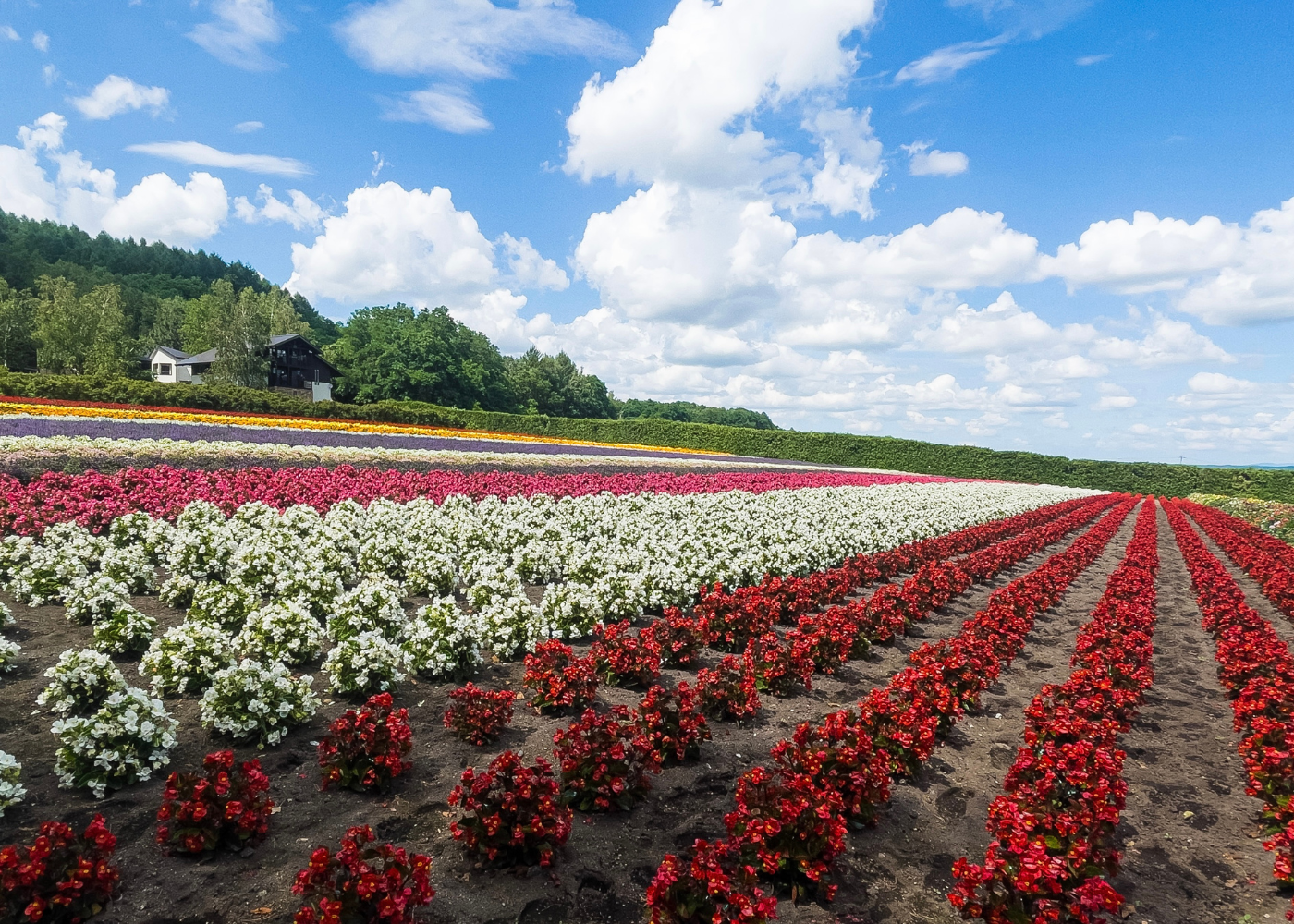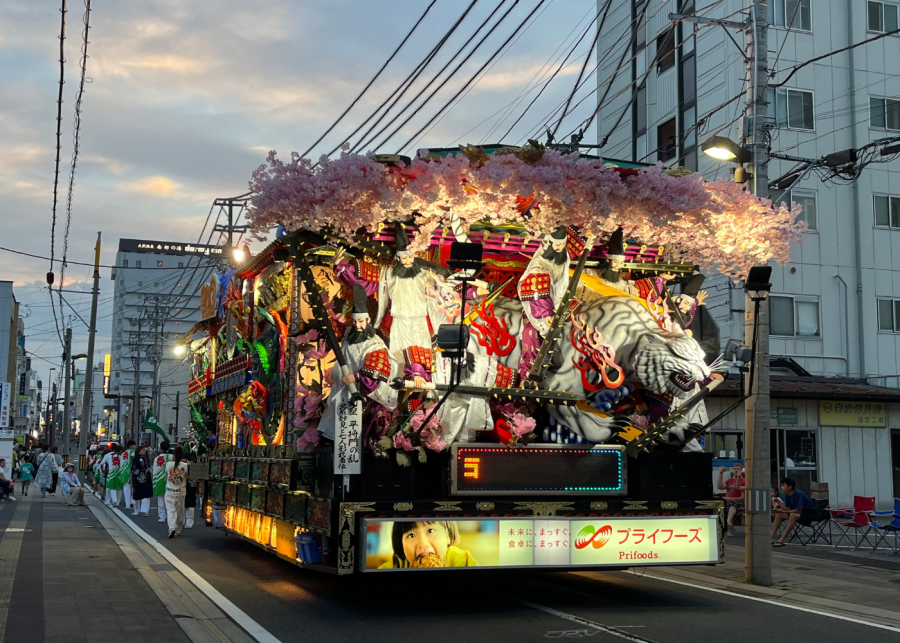
Attending traditional festivals in Japan is a fun and immersive way to experience the country’s culture, community spirit, and core values.
Celebrating the way locals do is a fantastic way to immerse yourself in new experiences. In Japan, there are over 100,000 annual festivals, some of which are on UNESCO’s Intangible Cultural Heritage list. Living in Japan, I love experiencing the country’s famous festivals because it’s the best way to immerse myself in cultural traditions. Keen to do the same? Here are the ones I’d recommend looking out for.
A quick background on Japanese festivals
Japanese festivals, or matsuri, are time-honoured occasions celebrated with music and dance performances. A lot of them feature costume processions, floats, live re-enactment performances, and yatai (food stalls). Carnival games like goldfish scooping or fishing for toys are also a big hit with the little ones!
Most Japanese festivals originate from longstanding cultural practices or folk history; each reflects the unique religious beliefs of a given region. Whether it’s paying respect to various kami (Shinto gods) for agricultural harvests or offering prayers for protection from natural disasters, festivals are celebrations of significant events, such as ancient battle victories or the founding of cities.
1. Tokyo’s Kanda Matsuri
Happens during odd-numbered years on the weekend closest to 15 May
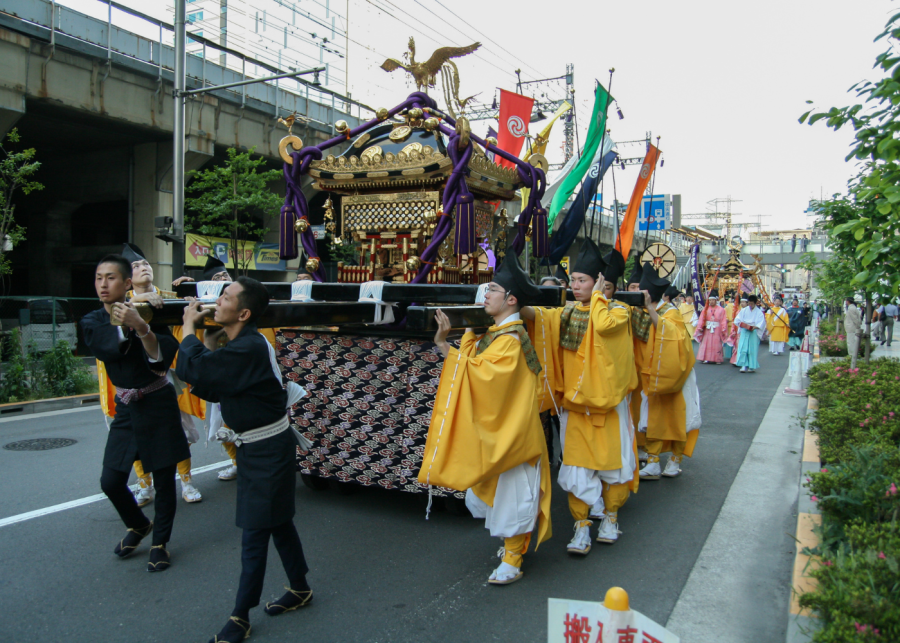
This Shinto festival celebrates Tokugawa Ieyasu, one of the Three Great Unifiers of Feudal Japan, to commemorate his victory at the battle of Sekigahara in 1603. Over the years, it has evolved into a celebration of Tokyo’s wealth and good fortune, as well as a festival of gratitude towards the two Kanda deities: Daikokuten, the god of good harvest and matrimony, and Ebisu, the god of fishermen and business.
The main feature of this matsuri is a massive parade that displays over 200 mikoshi (small, sacred portable shrines) accompanied by musicians, dancers, floats, and re-enactment performances of samurai in armour on horseback.
2. Hiroshima’s Tokasan Yukata Festival
First weekend of June
The Tokasan Festival in Hiroshima is one of the biggest summer festivals in the region. Held at Enryu-ji Temple, locally known as Tokasan, the festival began in 1620, the year after the deity Toka Daimyojin was first enshrined. During the festival, the sacred statue of the Shinto deity Inari, the god of rice, prosperity, and fertility, is open to the public to pray for good fortune.
This festival is said to be Hiroshima’s harbinger of summer, and you can see thousands of festival-goers dressed in beautiful yukata, a light, cotton kimono meant for summertime. As the city’s main Chuo-dori Street is closed to traffic, it fills up with dancers, music performances, and fashion shows. Everyone can participate in the Bon-odori dance held twice each night!
3. Kyoto’s Gion Matsuri
Takes place across July, with 17 July as the biggest day.
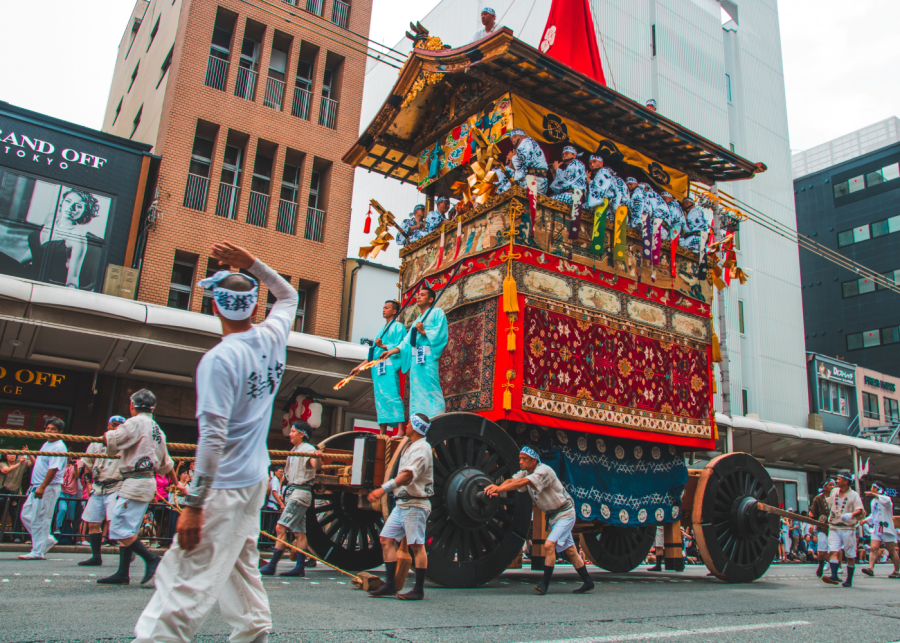
One of the largest and most famous festivals in Japan, Kyoto’s Gion Festival originated in 869, when a plague in Japan’s ancient capital was attributed to the work of evil spirits. Emperor Seiwa ordered prayers to Susanno-no-Mikoto, the god of the Yasaka Shrine, and the different mikoshi of Yasaka were paraded along the streets with lanterns whenever an outbreak of plague occurred.
Over the years, floats and other important regalia were made for the Gion Matsuri, originally to represent the 66 ancient provinces of Japan, but eventually, to reflect life-sized figures of Shinto deities, Buddhist bodhisattvas, and other culturally significant figures from Japanese history.
The main event is the procession of wooden floats along Karasuma and Shijo streets, accompanied by musicians and dancers. You can even purchase special tickets for front-row seats to take in the parade like ancient royalty! In the days leading up to the big day, the streets are closed to traffic in the evenings, and the area bursts into a lively market of food stalls, drink vendors, and carnival games.
4. Hachinohe’s Sansha Taisai Festival
31 July to 4 August 2025
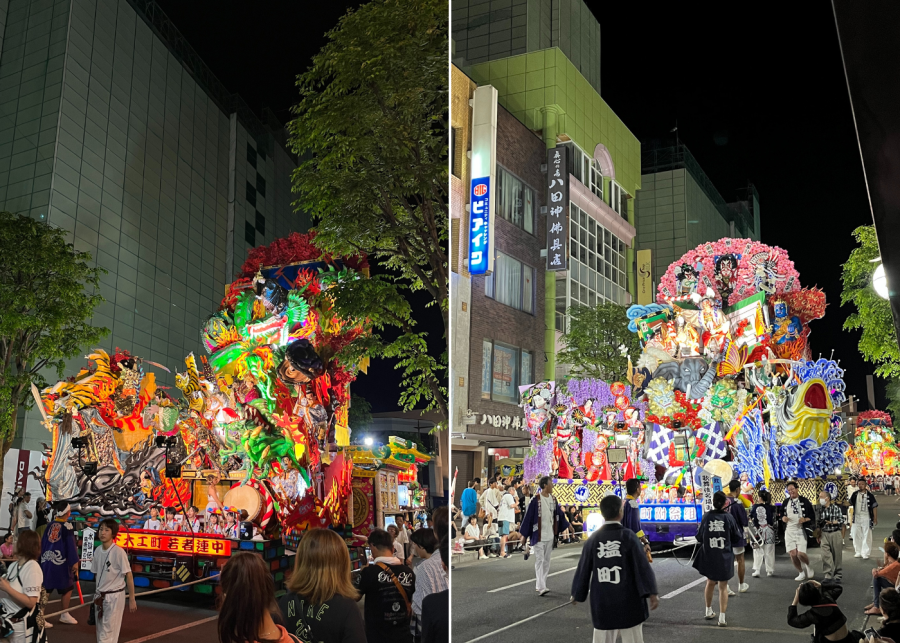
Another city in Aomori prefecture, Hachinohe’s Sansha Taisai is a Shinto festival that’s recognised by UNESCO. This festival features a parade with troupes of dancers and a variety of traditional Japanese instruments, with support from community volunteers and children from the local schools. The highlight is the procession of colourful wooden floats that expand from boxy, trailer-looking compartments into stunning, detailed scenes depicting traditional Japanese myths and folklore.
For me, experiencing this festival was fun and rewarding. I was blown away by the sheer size of those expanding floats. The city’s efforts in putting together this huge festival were truly a wonderful sight. P.S. you can approach one of the booths along the route to rent an outfit and participate!
5. Aomori’s Nebuta Festival
2 to 7 August 2025
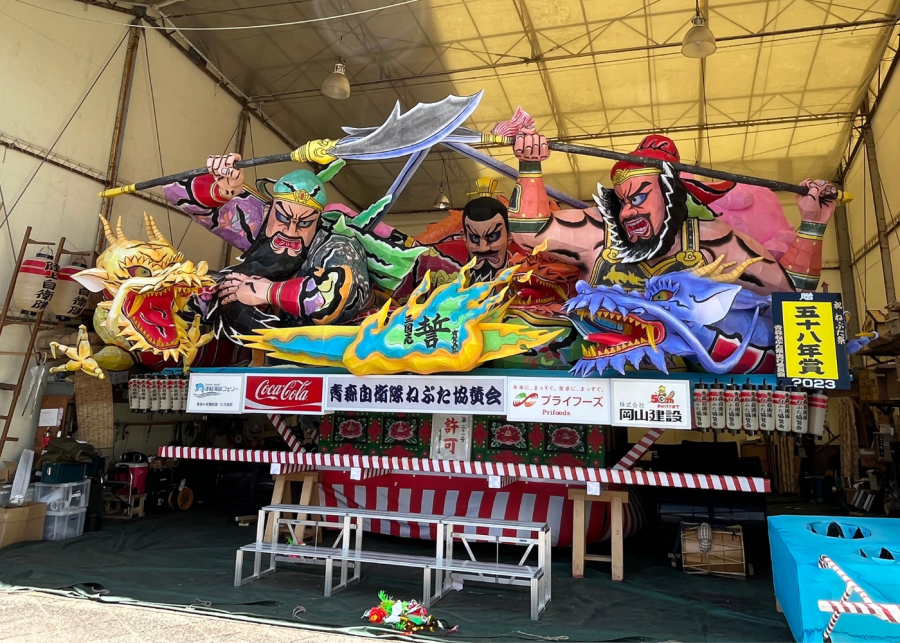
The Nebuta Festival in Aomori is the first of three major summer festivals in Tohoku. It’s said to be a fusion of the Tanabata Festival traditions from China with the customs of the Tsugaru Family, a powerful samurai clan that ruled Aomori Prefecture from 1590 to 1873.
Traditionally, huge paper lanterns were hoisted onto bamboo frames that sat atop wooden platforms to act as parade floats, with everything lit up at night by candlelight. Today, they’re illuminated by electric lights, but the colours and the scenes depicted are still incredible to see!
P.S. anyone can take part in the festival – rental costumes are available along the main street. On my visit, I spotted floats that were part of the parade. The craftsmanship of these lanterns was stunning, with immaculate precision and blending of vibrant colours over the fragile washi paper.
6. Akita’s Kanto Matsuri
3 to 7 August 2025
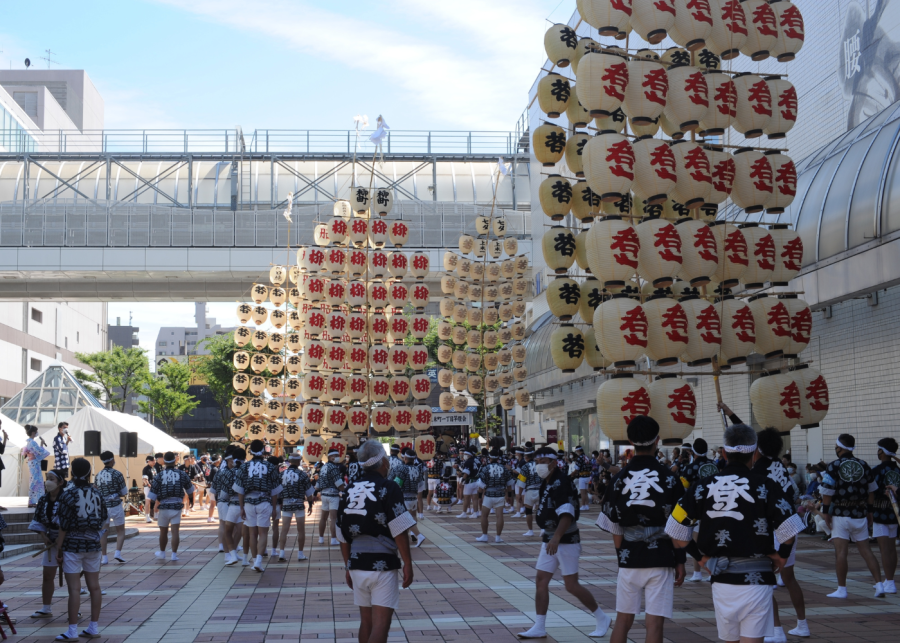
Akita City’s Kanto Matsuri is a Tanabata-related festival that began as a ritual to cleanse the community and ward off bad spirits. It was also an opportunity to pray for a good autumn harvest. This is the second of three major summer festivals in Tohoku, and one of the many matsuri recognised by UNESCO.
The festivities feature kanto (long bamboo poles) with an array of paper lanterns attached. These are balanced on lantern bearers’ bodies, including their foreheads, palms, shoulders, or hips, requiring immense strength, balance, and skill. Fun fact: the largest and heaviest kanto has a 12m-long bamboo pole supporting 46 paper lanterns weighing over 50kg!
At the main event, nightly parades see lanterns lit with candles paraded down the streets by single performers. Drums, flutes, and chanting fill the air, while the performers add extensions to their bamboo poles until they reach their maximum heights! Oh, and look out for kanto competitions in the daytime, where groups compete in various categories, as well as gourmet rows of yatai selling a variety of food.
7. Sendai’s Tanabata Festival
6 to 8 August 2025
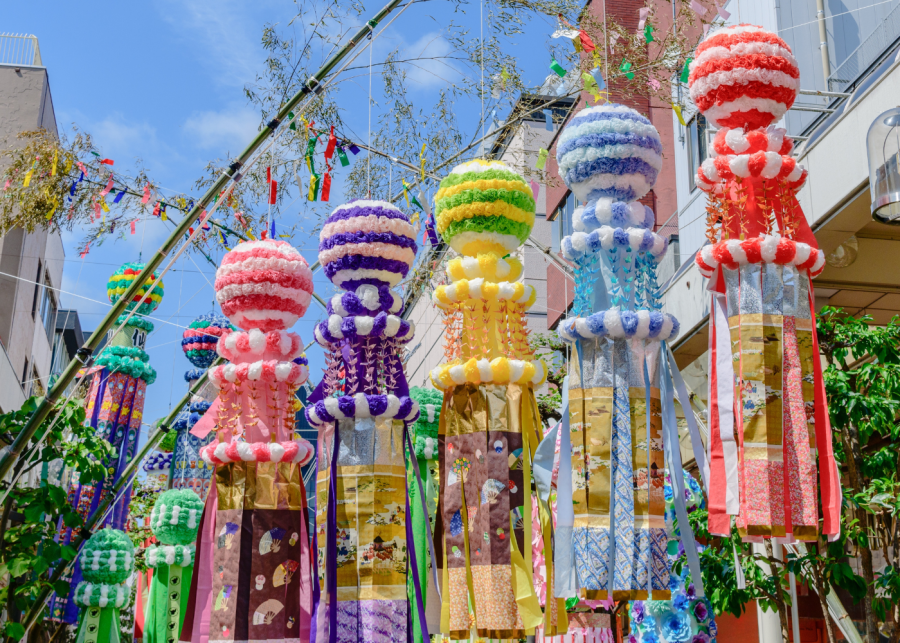
Tanabata, or Star Festival, is based on an old folktale of the cowherd and the weaver girl: star-crossed lovers who can only cross a bridge of birds once a year on this date to be together. You’ll spot people writing their wishes on tanzaku (colourful strips of paper) and hanging them on a bamboo tree with other paper decorations. Afterwards, the bamboo is set out on a river or burned to let nature carry their wishes to the gods.
This festival was beloved by Date Masamune, the first samurai lord to rule Sendai from 1567. Eventually, the city developed its unique customs to celebrate the day. Its main feature is the intricate and ornate decorations made of brightly colored washi paper, crafted by the local shops, schools, and community groups. Decorations are hung on 10m bamboo poles lining the streets and shopping arcades.
Don’t miss the fireworks, which explode in the night sky on 5 August before the festivities begin. While I’ve visited Sendai before, I was only in town after their Tanabata festival had concluded – but I still managed to catch a glimpse of the decorations as the city was taking them down!
8. Tokushima’s Awa Odori Festival
12 – 15 August 2025
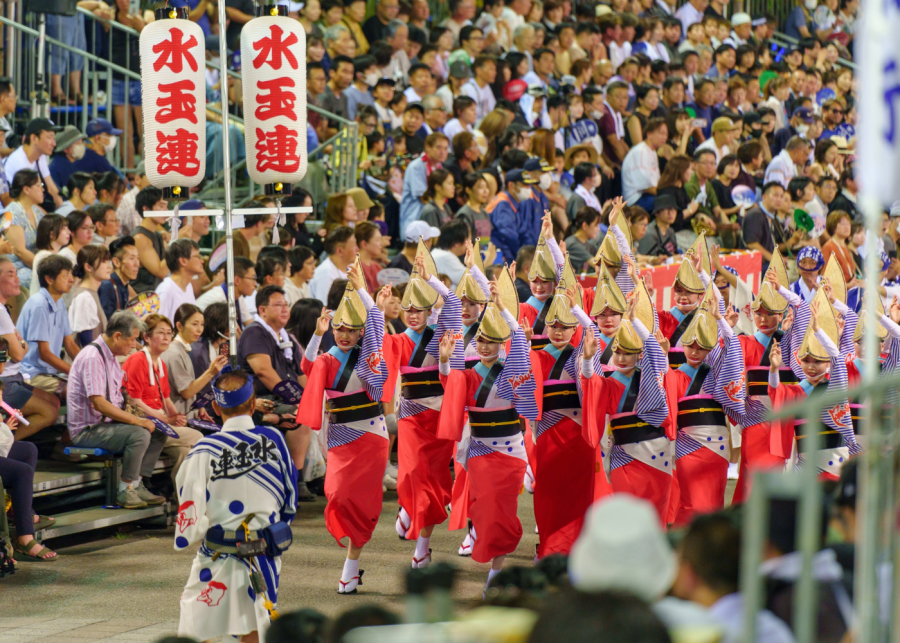
Tokushima’s Awa Odori festival is the largest dance festival in Japan. It’s part of the larger Obon festivities in Japan (similar to Ghost Festivals in Southeast Asia), where people return to their hometowns to honour their ancestors and visit family graves. The spirits of the ancestors are said to visit household altars during this time, too.
During the festival, groups of dancers perform on the main streets to the sound of traditional Japanese instruments, and performers sing and chant as they parade through the streets. Some dances even feature acrobatic gambols with performers completing cartwheels and somersaults.
9. Saga’s Karatsu Kunchi Festival
2 – 4 November 2025
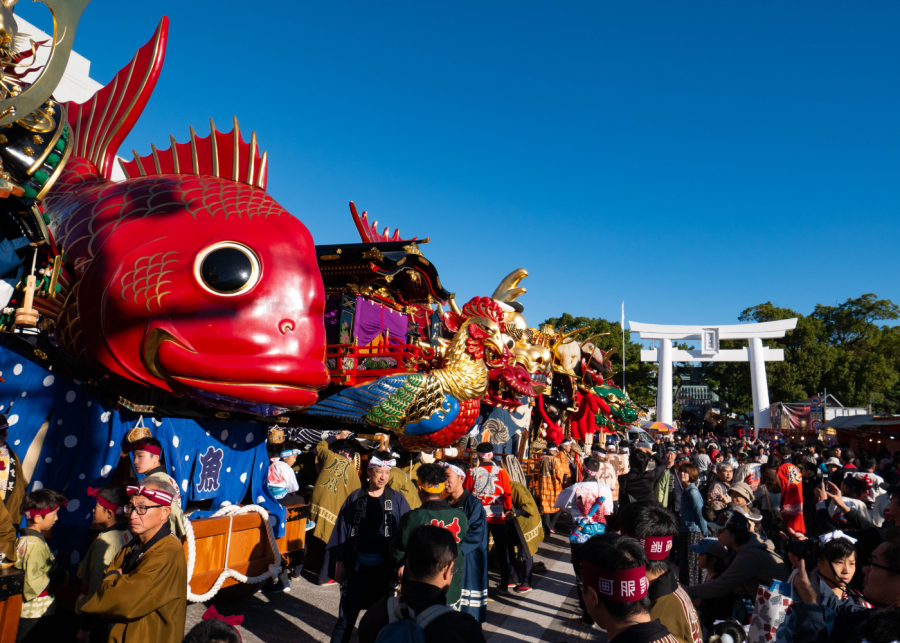
Held in Karatsu City in Saga Prefecture, the Karatsu Kunchi Festival is an annual autumn festival recognised by UNESCO for its Intangible Cultural Heritage.
Originating in the 1600s, this festival features a massive three-day parade with giant, spectacular Hikiyama floats resembling characters from Japanese folklore. Look out for the fourteen Hikiyama floats, each shaped like a different mystical creature, made from wood and lacquer in the 1800s.
Festival food: What to eat
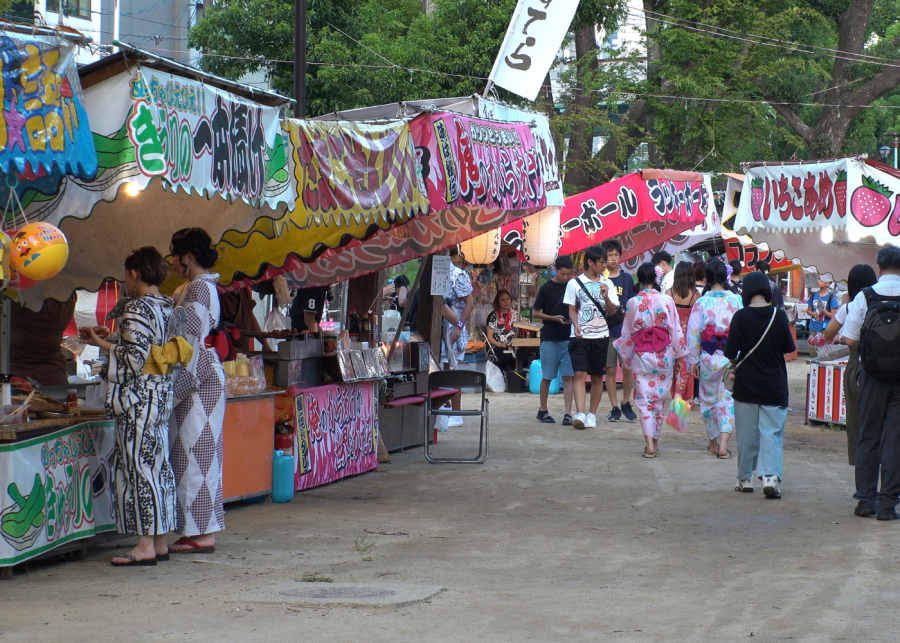
If you’ve been to a matsuri before, you’ll know that no festival is complete without the rows and rows of yatai selling delicious, Japanese street food! Here are some of the classics:
- Yakitori: popular chicken skewers grilled over an open flame.
- Ikayaki: a whole grilled squid brushed with soy sauce and served piping hot, perfect to pair with an ice-cold beer.
- Yakisoba: stir-fried buckwheat noodles, meat (usually sliced pork, chicken, or shrimp) and cabbage in a soy-based Worcestershire sauce, served with pickled ginger and seaweed flakes.
Keep an eye out for these famous festivals the next time you visit Japan!
